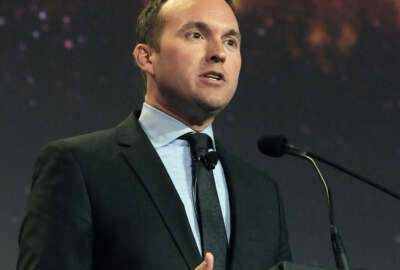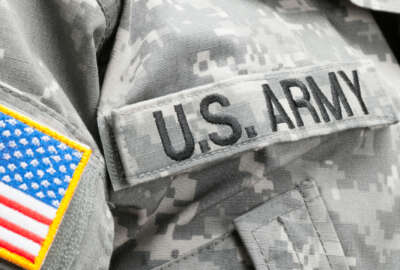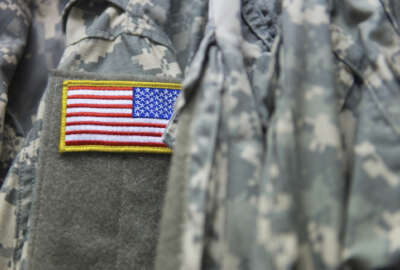
Future Army Commission report misses mark, experts say
Defense analysts think the National Commission on the Future of the Army could have been bolder in its recommendations.
Now that the Future of the Army Commission finally released its long-awaited recommendations, former military officers and other experts are less than excited.
These observers say the suggestions don’t go far enough in giving the Army a clear roadmap to success.
The commission “had the opportunity of a generation to define not only why you have an Army, but what you want it to do and therefore what it has to look like and … they didn’t do it,” said Dan Goure, vice president at the Lexington Institute. “They missed a huge opportunity.”
Congress tasked the commission with making recommendations on how the Army should best organize and employ a total force in a time of declining resources, and how the Army should proceed in the transfer of Apache helicopters from the reserve components to the regular Army. The commission released the report Jan. 28.
But, the commission’s charter opened up a larger philosophical mandate over the role of the Army components and the service as a whole.
Some analysts feel the report missed a chance to make a statement about what the Army really needs, especially when it comes to the size of the active duty force.
The report stated the Army can live up to the national security demands of the nation even if the number of active duty soldiers is drawn down to 450,000 soldiers, as the service plans to do by 2018.
“That’s the biggest disappointment or problem with the commission is that it seems to OK an Army of 450,000 active duty soldiers, a level that senior Army leaders have testified as too low to meet our national needs. It’s a level that’s below what bipartisan commissions have recommended,” said Justin Johnson, a senior policy analyst at the Heritage Foundation.
Jim Thomas, vice president of the Center for Strategic and Budgetary Assessments, seemed to agree.
“The commission’s recommendations on end-strength, readiness and modernization were ‘steady as she goes’ — a bit surprising given the world is going to hell in a hand basket,” he said.
The commission said it had to take into account the fiscal environment, which does not account for a larger force.
“We were given specific parameters in our authorization to look at anticipated future resources and current resources versus an acceptable risk. Yeah, we’re worried, but given the resources we had, we don’t see those numbers going up. We don’t have the money to increase the number of our soldiers,” Future of the Army Commission Vice Chairman Thomas Lamont told Federal News Radio after the commission released the report.
Goure said despite the budget, the commission still could have given the Army options about what it could do to increase the force size. The commission did this with the way it handled the Apache helicopter situation by giving the Army three options to handle the problem and then recommending one.
One unified service
Not everyone thinks the commission missed the boat, though. Mark Cancian, senior adviser at the Center for Strategic and International Studies, said the commission made it clear that the lowered force numbers were an absolute floor.
“They implied there would be less risk if you made the Army larger, although they did not come out and actually ask for that,” Cancian said. “I think when you look at the whole report there’s a clear argument that the Army needs more resources.”
Outside of the blockbuster recommendations about force size and helicopters, experts seem ambivalent about most of the 63 recommendations to come out of the commission.
One of the more philosophical issues the commission addressed was the role of the National Guard, Reserve and regular Army components.
A main focus of the report, according to the commissioners, was the total force of the Army; mainly combining the three components as one unified service.
Cancian said the commission moved in that direction, but not very decisively.
The commission “proposed a step in the direction of more multicomponent, but it did not make a very bold step. The Army’s experience with these kinds of units is very mixed,” Cancian said. “There’s been some criticism that the commission took a good step, but didn’t go far enough.”
Multicomponent units refer to the use of reserve and National Guard troops alongside active duty service members. The total force becomes important in an all-volunteer military when active duty cannot provide all the necessary needs.
One area where experts are mixed is the commission’s suggestions to keep an armored brigade combat team in Europe.
Thomas said stationing a brigade combat team in Europe and a combat aviation brigade in Korea were the “most consequential, strategically-minded of the commission’s recommendations,” considering the threats posed by North Korea and Russia.
Johnson agreed.
“Both of those are pretty solid recommendations. We’re down to two combat brigade teams in Europe, neither of them are heavy fighting brigades. I actually think we need to do more than one brigade in Europe,” Johnson said.
Goure said the extra brigades would further stretch an Army that is already stretched too thin, especially in the budgetary environment.
Of course, the commission’s suggestions don’t carry any legal weight without the Army, Defense Department or Congress implementing them.
The question is will any of it be implemented?
Goure seems to think it’s doubtful.
“Nothing is going to get done this year. Next year, [we have a] new President, new national security strategy, the budget will change,” Goure said. “Where this document sits is if it’s not a clarion call it’s going to get buried.”
Goure thinks the call is not there.
What the Army should look like
Others are more optimistic about the recommendation’s chances.
“I think to some degree there’s a chunk of recommendations in this report that a stronger budget for the Army would solve,” Johnson said. “There’s a second larger group of recommendations in here that aren’t really political, they are just good policy and steps in the right direction of what the Army should look like.”
Johnson said he is hopeful they will be considered by the new administration if they are not taken up this year.
Cancian said he doesn’t think the commission’s recommendations will go away. They are part of a larger national security debate, which will be part of next year’s discussion.
Both DoD and the Army said they are looking into the suggestions.
“The commission highlights the increasing risk to our soldiers and our national security amid increasingly diverse and complex threats and reckless defense budget reductions,” Senate Armed Services Committee Chairman John McCain (R-Ariz.) said in a statement. “This is unacceptable. The Senate Armed Services Committee will closely study the work of the commission as we shape the National Defense Authorization Act for fiscal year 2017.”
Senate Armed Services Committee Ranking Member Jack Reed (D-R.I.) also released a statement.
“This was a challenging assignment and I’d like to thank the commissioners for their hard work and thoughtful input,” Reed said. “I commend them for their transparent and inclusive approach They sought out countless soldiers, military personnel, elected officials and others to hear multiple views and compile a comprehensive assessment. I look forward to working with Chairman McCain and our colleagues on the committee as we review their recommendations and ensure that any action we take strengthens our Army.”
Copyright © 2025 Federal News Network. All rights reserved. This website is not intended for users located within the European Economic Area.
Scott Maucione is a defense reporter for Federal News Network and reports on human capital, workforce and the Defense Department at-large.
Follow @smaucioneWFED





